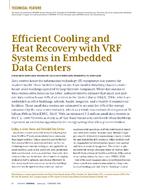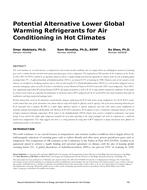The approaches used in the design and repair of buildings, underground utilities, and engineered facilities in arctic climates differ extensively from those used in temperate regions due to the presence of permafrost, a layer of ground where the temperature remains below the freezing point for several years. From an engineering standpoint, straightforward design techniques employed in temperate regions are no longer valid and often present major construction problems. Therefore, a designer must have a thorough knowledge, not only to satisfy underground utilities during emergencies within the required time constraints while maintaining the facilities’ operations. To that end, this paper presents some practical engineering design considerations unique to permafrost regions, as well as a case study showing some of the challenges encountered in repairing a damaged steam distribution system of an air force base in Alaska following a major earthquake. Specifically calculations and measurements of pipe and component dimensions to allow for contraction.
KEYWORDS: designing, buildings, arctic regions, permafrost, USA, engineering, steam, underground, operations, heating, ventilation, distribution equipment, pipes, building services, case studies, frost protection, restoring, thermal movement, block heating.
Citation: Symposium, ASHRAE Transactions, vol.97, Pt. 1, New York 1991
Product Details
- Published:
- 1991
- Number of Pages:
- 10
- File Size:
- 1 file , 1.3 MB
- Product Code(s):
- D-18581


